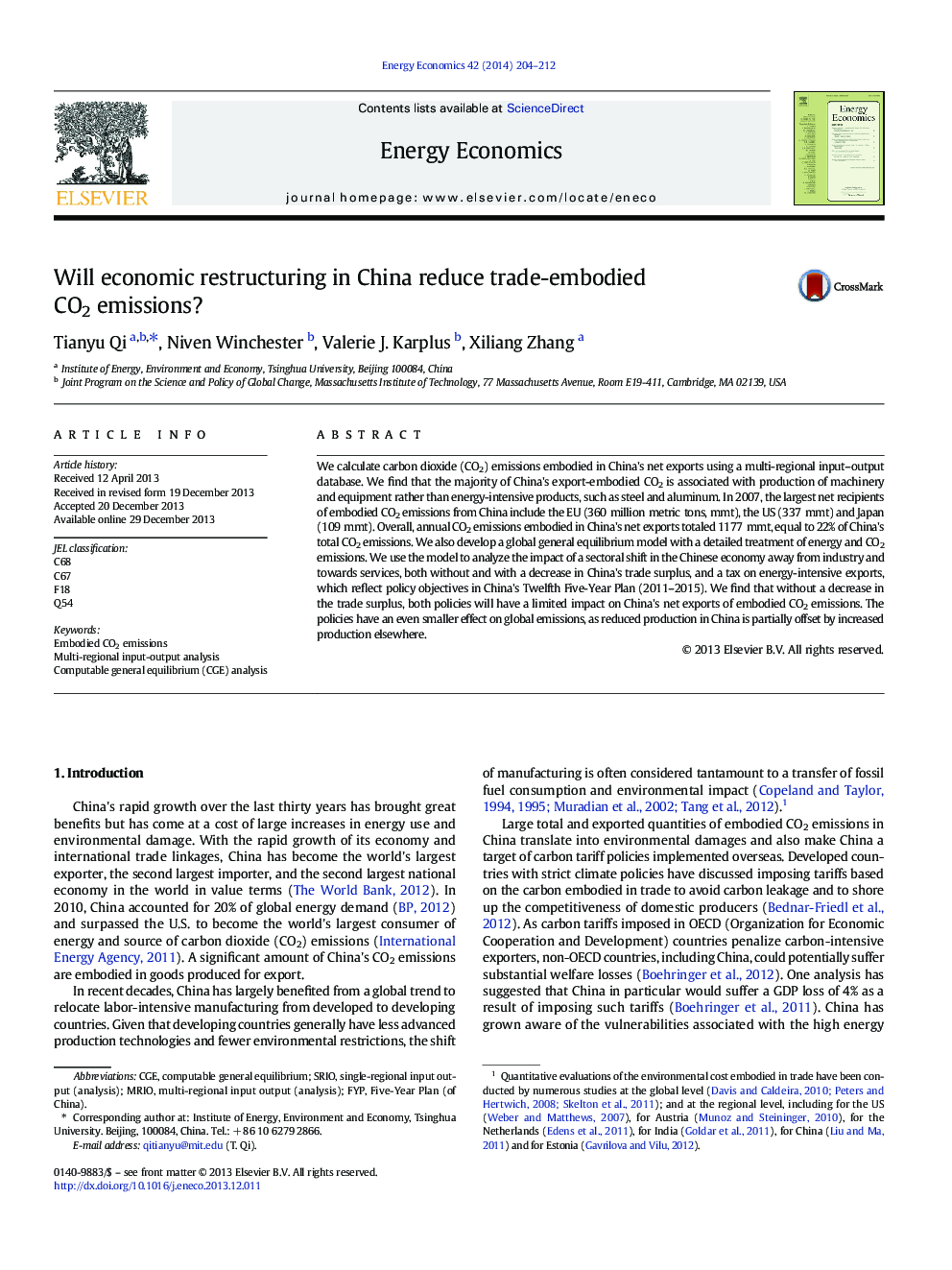| کد مقاله | کد نشریه | سال انتشار | مقاله انگلیسی | نسخه تمام متن |
|---|---|---|---|---|
| 5064738 | 1476721 | 2014 | 9 صفحه PDF | دانلود رایگان |
- CO2 embodied in exports accounts for 22% of China's total CO2 emissions.
- Equipment manufacturing accounts for more export-embodied CO2 than energy-intensive industry.
- Policies that change China's economic structure or exports have little effect on CO2 emissions.
- Emission reductions in China are mostly offset by relocation of production abroad.
- Modest global emission reductions occur if relocated production is more efficient.
We calculate carbon dioxide (CO2) emissions embodied in China's net exports using a multi-regional input-output database. We find that the majority of China's export-embodied CO2 is associated with production of machinery and equipment rather than energy-intensive products, such as steel and aluminum. In 2007, the largest net recipients of embodied CO2 emissions from China include the EU (360 million metric tons, mmt), the US (337 mmt) and Japan (109 mmt). Overall, annual CO2 emissions embodied in China's net exports totaled 1177 mmt, equal to 22% of China's total CO2 emissions. We also develop a global general equilibrium model with a detailed treatment of energy and CO2 emissions. We use the model to analyze the impact of a sectoral shift in the Chinese economy away from industry and towards services, both without and with a decrease in China's trade surplus, and a tax on energy-intensive exports, which reflect policy objectives in China's Twelfth Five-Year Plan (2011-2015). We find that without a decrease in the trade surplus, both policies will have a limited impact on China's net exports of embodied CO2 emissions. The policies have an even smaller effect on global emissions, as reduced production in China is partially offset by increased production elsewhere.
Journal: Energy Economics - Volume 42, March 2014, Pages 204-212
